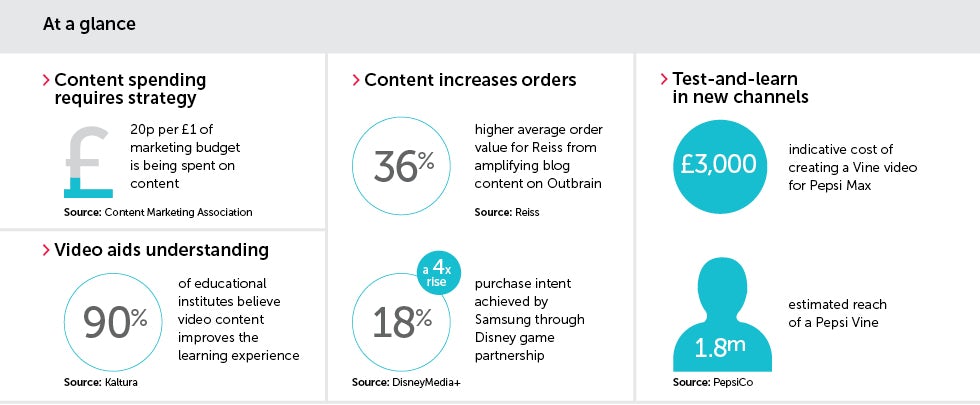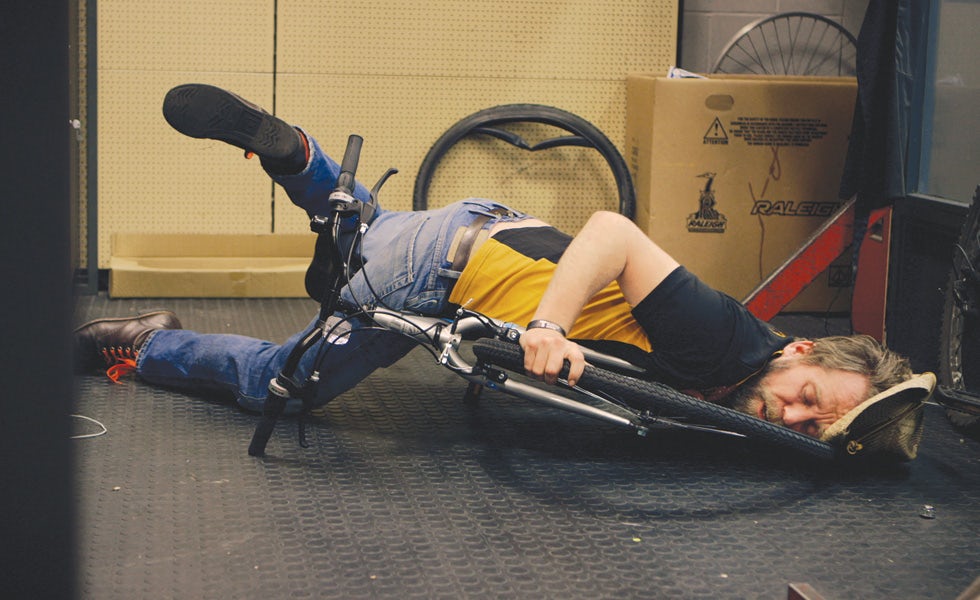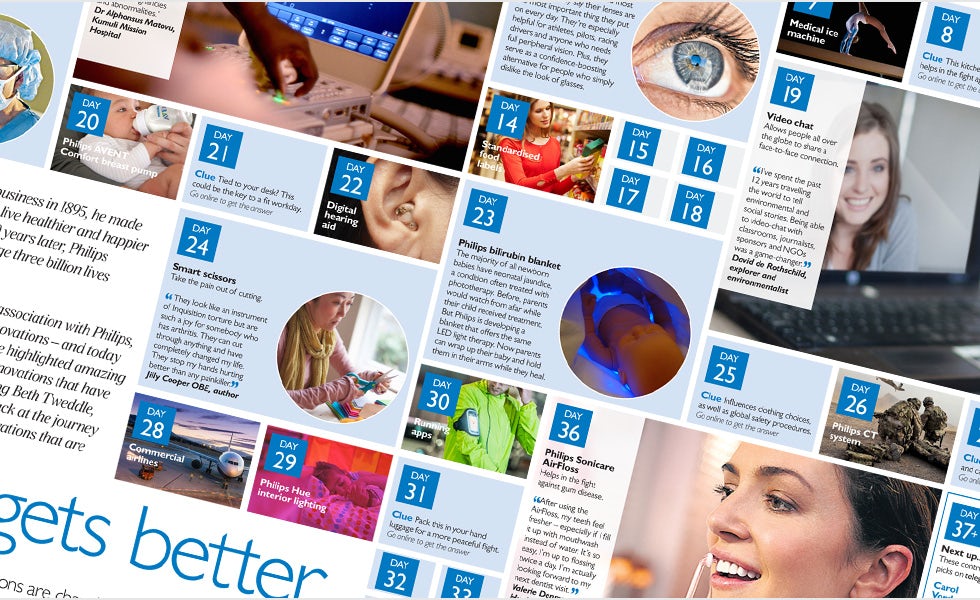Choosing the right platform for your content
Such is the popularity of content marketing that 20p in every £1 of marketing budget is now spent on it. However, compelling and shareable content can be a hit and miss affair, so what are the best ways of creating great content and getting it seen?


Seven out of 10 marketers are now using content marketing, according to the Content Marketing Association (CMA), making it an essential part of the marketing mix for most. With 20p in every £1 of budget being spent on content – according to The State of the Nation report by research agency TNS for the CMA – marketers are under pressure to make sure the right content is created and seen in the right place by their target audience.
For some brands that means producing regular content on their own websites to boost page visits and improve their position on Google rankings. Others are opting for the more familiar approach of partnering with an established media owner, using their platforms for distribution to a loyal audience.
Fashion retailer Reiss is doing the former in the belief that producing shareable content for a company website can be an effective way of pursuing marketing objectives while keeping full editorial control of copy. The retailer, therefore, writes its own fashion blog, and aims to assess whether the content creates incremental sales.
It worked with digital media-buying agency Threepipe to drive traffic, and used discovery platform Outbrain to promote the content on thousands of publisher sites around the web, including CNN’s news site.
Giedre Guntulionyte, customer acquisition manager at Reiss, says: “Ultimately, users who consume Reiss content via Outbrain and then go on to purchase have been shown to spend more than those compared to display media.” Results show that this approach drives 36% higher average order value compared to display media.
Indiana University (IU) in the US is similarly using Oracle Content Marketing as a content hub to collect student-generated articles with the aim of encouraging more students to study there. Research shows that user-generated content often produces better results than branded content, with 70% trusting it, according to Nielsen research.
The university wants prospective students to read credible information about campus life, but with the ability to moderate content before publication. This approach has led to 1,200 articles being submitted in the first year, and content being shared via social media channels.
“One article about IU’s residence [centres], which incoming freshmen are particularly interested in, was shared 1,100 times,” says Jay Steele, assistant director at the institution’s Office of Enrollment Management. “That’s the way prospective students want to get their information these days.”
Maximising content impact
Recognising how and where a target audience wants to view content is key to maximising its impact. Car and bike accessories retailer Halfords wanted to introduce its brand to a new audience and chose the medium of film. The retailer was hoping that it would create a buzz and show a different side of the brand’s personality to viewers – highlighting its service in a quirky way. Unlike Reiss and Indiana University, Halfords has mostly relied on third parties for production and distribution of its content marketing.
The retailer used a series of films written and produced by Red Bee to tell the story of The Bike Whisperer, a man with bike-healing powers, played by stand-up comedian Tony Law. He interacted with real customers in store and the resulting series of films can be seen on YouTube.

Ben Towers, digital studio manager at Halfords, says The Bike Whisperer was launched during this year’s Tour de France to create maximum impact. “We needed something that would get people thinking about Halfords; that made people smile and would put us on the map.”
Halfords social media manager Abhi Punj adds: “In terms of targeting, we went for everyone. The reaction has been really positive: people appreciated that we went out of our comfort zone when making The Bike Whisperer.”
The retailer aimed to encourage people to engage with its other video content, and it achieved 35% to 40% earned views, according to Punj. YouTube was chosen to distribute the film because of its wide reach, and Towers adds that this type of disruptive content worked in the digital space because it could be shared and commented upon by viewers.
“If our existing fan base engages with our content, we know that millions of others will engage with it too”
Aman Matharu, PepsiCo
While Halfords chose the medium of films and the YouTube platform for mass awareness and impact, video has also been shown to be effective for learning. The British Heart Foundation (BHF) released a film created by One Two Four to teach people how to recognise when someone is having a cardiac arrest and how to react to the situation. It has been distributed to schools in DVD format and is also available on the BHF website and YouTube.
Research carried out in the US by Kaltura shows that 90% of educational institutes believe that video improves the learning experience, and Judy O’Sullivan, BHF’s assistant programme director, says that it needed a campaign to catch people’s attention.
O’Sullivan says: “We’re committed to increasing survival rates from out-of-hospital cardiac arrest, which are lower in the UK than in other developed nations. In parts of Norway, survival rates from out of hospital cardiac arrests are one in four, but in the UK fewer than one in 10 people survive.
“Working with our supplier, Laerdal, we recognised that learning styles have changed and, of course, technology has changed too. People, particularly young people, are more open to different models of learning and so our new cost-effective and portable ‘watch and learn’ model of CPR training is contemporary, effective and time-efficient, which is particularly important in a busy world.”
How Philips aims to change brand perception with content
Philips is using content marketing in a bid to change the way consumers think of it. The ‘100 days of Life Changing Innovation’ campaign, which is running on an interactive hub hosted by The Telegraph, is a series of articles written by well-known contributors, including editor of British Vogue Alexandra Shulman and explorer David de Rothschild.
Wander Bruijel, Philips’ head of brand, communications and digital, UK & Ireland, says the campaign is aiming to show the British public “that we are committed to delivering innovation that matters to people”. He adds: “We wanted to draw on the experiences of individuals to help bring that vision to life in an engaging way.”
Media agency Carat managed a partnership between Philips and The Telegraph for this content marketing campaign. The Telegraph Media group was chosen as Philips’ media partner because it reached its target audience across print, digital and mobile.
Bruijel adds: “With this campaign, we are targeting what we call the digitally savvy ‘sandwich’ generation. This is an influential group of individuals who [are sandwiched between] young families and ageing parents. They are experiencing first-hand some of the macro-trends facing society today: pressure on healthcare, pressure on our environment and resources, pressure on our financial futures.
“Our aim with this campaign was to provide this group of influential individuals with engaging and shareable content about how innovation is addressing some of their most fundamental needs and concerns.”
The ‘100 days of Life Changing Innovation’ campaign is still ongoing, but Bruijel says success will be “determined by whether we have been able to shift people’s perceptions about what Philips stands for, namely a technology company that genuinely cares about you”.

Targeting millennials
PepsiCo’s content strategy is dictated by its target audience of millennials, who, according to digital marketing manager Aman Matharu, are not interested in TV but instead want to see content on the likes of Vine and Snapchat.
Working with digital agency Jaywing, social media and video content is created under the ‘Unbelievable’ banner to promote Pepsi Max’s strapline ‘Maximum taste, no sugar’.
Matharu explains: “We need to stand for something new with a generation of millennials, so we produce engaging content through digital. We can create a Vine and pay £3,000 and it gets 1.8 million people watching it. If in a few hours content has gone viral, we will boost it with media spend so it can reach the masses. It’s a test-and-learn approach. If our existing fan base engages with our content, we know that millions of others will engage with it too.”
Matharu adds that if content does not do well in a few hours, PepsiCo will not spend lots of money on media promoting it further. Instead, the brand will look at why particular efforts did not work. “During the World Cup, we set ourselves an [ambitious] benchmark and the Unbelievable Game content had only 2 million views. It didn’t fly because it was competing with so much other content.”
Jewellery brand Swarovski has taken a data-driven approach to deciding which media touchpoints best reach its target audience, working with working with media agency Ninah, part of the ZenithOptimedia Group.
Data-driven approach
Swarovski director of media and branding Lucia Hargasova has implemented this new way of decision-making since joining earlier this year. The company operates in 35 countries, requiring an integrated approach across all of them.
An analysis of the channels Swarovski was using showed that print titles are the strongest touchpoint globally, resonating with its female target audience. Hargasova says: “We have an advantage in that women love fashion and jewellery, so our content is emotionally engaging.”
However, she adds that taking a deep look at the data, which took from a month to 12 weeks in each market, ensured that the brand now understands how to invest in a marketing mix that ensures Swarovski’s “beautiful content” reaches the right people and generates maximum return on investment.
Reaching the right audience for the marketing objective in mind should be the determining factor for all brands trying to decide which medium to use for their content, and which platforms for distribution.
The benefits of using a media partnership
Many platforms are positioning themselves as storytellers and utilising their creative teams to strengthen brand partnerships and the content that brands produce. The Guardian, DisneyMedia+ and YouTube all look to collaborate with advertisers on content that runs on their platforms.
Anna Watkins, managing director of Guardian Labs, says that the news brand has a politically “progressive audience” of 114 million monthly unique browsers. But to ensure content resonates with them, she says Guardian Labs applies three key principles to its branded partnerships: “collaboration, community and authenticity”.
“We produce our best work when we have the time to closely collaborate with clients hand in hand with our multi-disciplined team. Where our campaigns truly resonate is when we put our readers at the heart of our content, inviting them in to participate, comment and, in some cases, shape our editorial.”
Bobi Carley, UK commercial director at The Walt Disney Company, says her company’s collaborative approach makes best use of the “experts in storytelling” who are employed by Disney. It aims to nurture long-term partnerships with brands: it has worked with Samsung for almost four years on a number of its campaigns, for example.
Recently, it created exclusive content for the electronics manufacturer based on the animated movie Wreck it Ralph, with contributions from film studios and the film’s director Rich Moore. “We created awareness videos that were played out on our platforms. Spoof comedy videos were made showing all assets of the Galaxy Note II phone, so the product was at the heart of the campaign,” says Carley.
Users spent a combined time of 10 years on interactive tasks, games and content produced for the campaign – Samsung’s best-ever social media results, attracting 1 billion impressions overall. Importantly, purchase intent climbed four times to 18%.






